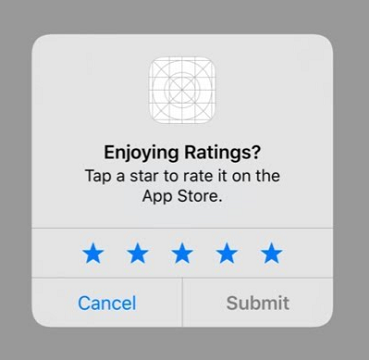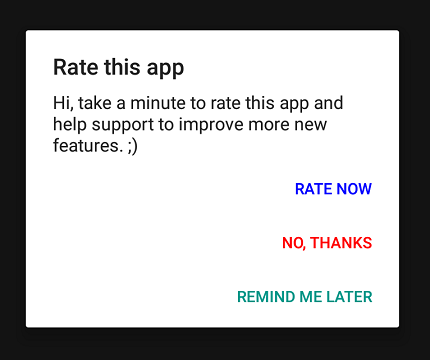Во многих приложениях вы, вероятно, встречали такую функцию, как запрос рейтинга в виде звездочек.
Без него вообще было бы довольно проблематично получить положительные оценки — вы получили бы отрицательные оценки только в том случае, если у пользователя возникнут проблемы.
| iOS | Android |
|---|---|
 |
 |
Зачем это вообще нужно с точки зрения маркетинга?
Дело в том, что пользователи решают установить приложение, используя звездочки и отзывы в качестве социальных сигналов. Когда-то компания Aptentive даже рассматривала влияние этих сигналов.:
| Было звезд | Стало звезд | Прирост конверсии |
|---|---|---|
| * | * * | 30% |
| * | * * * | 340% |
| * | * * * * | 730% |
| * | * * * * * | 770% |
| * * | * * * | 280% |
| * * | * * * * | 540% |
| * * | * * * * * | 570% |
| * * * | * * * * | 89% |
| * * * | * * * * * | 97% |
| * * * * | * * * * * | 4% |
Другими словами, даже успех и стоимость вашей кампании CPI сильно зависят от рейтинга приложения.
Итак, задача ясна, инструмент для получения оценок есть — осталось научиться им пользоваться.
Относительная честность в этом процессе заключается в умении выстроить его таким образом, чтобы вы получали больше хороших отзывов, чем плохих, не мотивируя пользователя и никого не вводя в заблуждение.
Однажды я увидел решение в Medusa, а они, в свою очередь, откопали его где-то в англоязычном Интернете.
Оно построено на предварительной «сортировке» пользователей в соответствии с их настроением по отношению к приложению.
- Вам нужно определить «Ага! момент»
- Буквально сразу после того, как пользователь осознает / получает ценность, задайте ему вопрос «Понравилось ли вам наше приложение?»
- В зависимости от ответа — вы можете либо получить оценку от пользователя в виде рейтинга в системе, либо собрать обратную связь на следующем шаге
В целом схема выглядит так:
Это может быть блок, встроенный в экран после основного функционала (например, на странице «спасибо за заказ»), или нижняя «шторка», или всплывающее окно. Выберите наименее раздражающий вариант для ваших пользователей.
Схема разработана таким образом, что мы отвлечем недовольных от оценки и выясним, чем они недовольны. Возможно, это поможет приложению стать лучше. А те, кто остался доволен, пойдут улучшать рейтинг и публично напишут хвалебные отзывы.
Я участвовал в организации этого процесса в нескольких приложениях и в разных случаях его применение давало прибавку ~ 0,5-1 балла к средней оценке. Понятно, что не только за счет «подтасовки» рейтингов, но и за счет учета негативного опыта пользователей при разработке, без ущерба для репутации.


